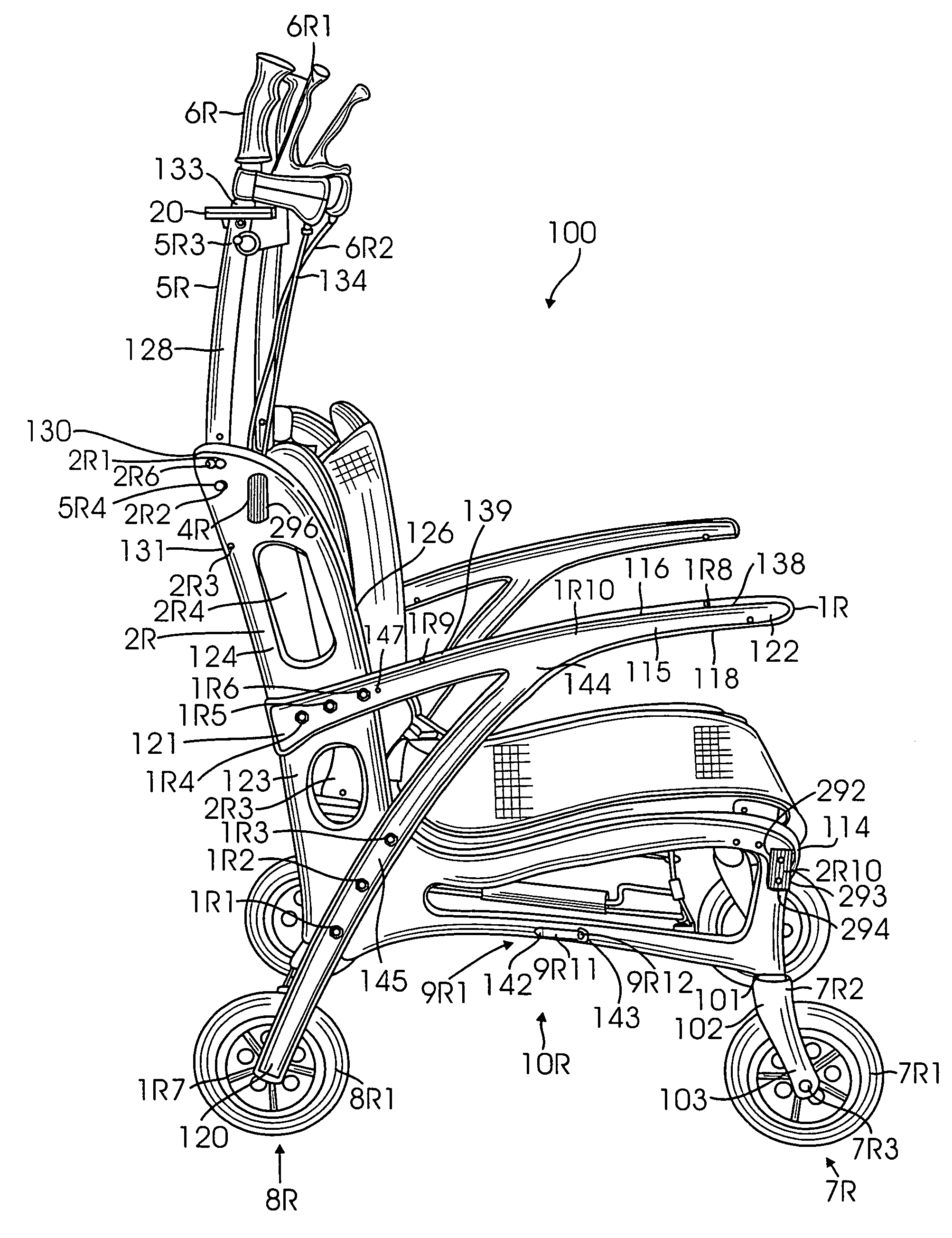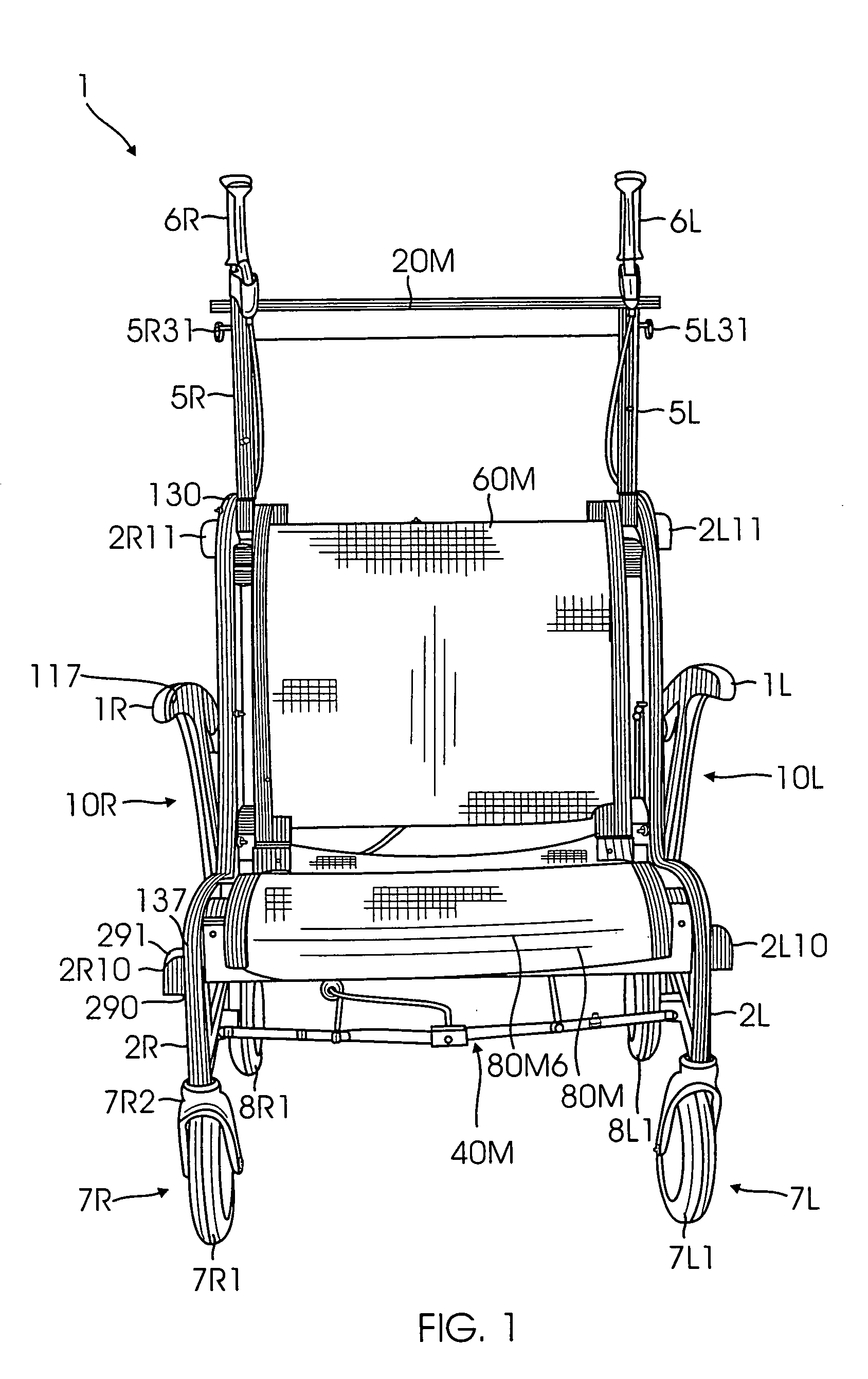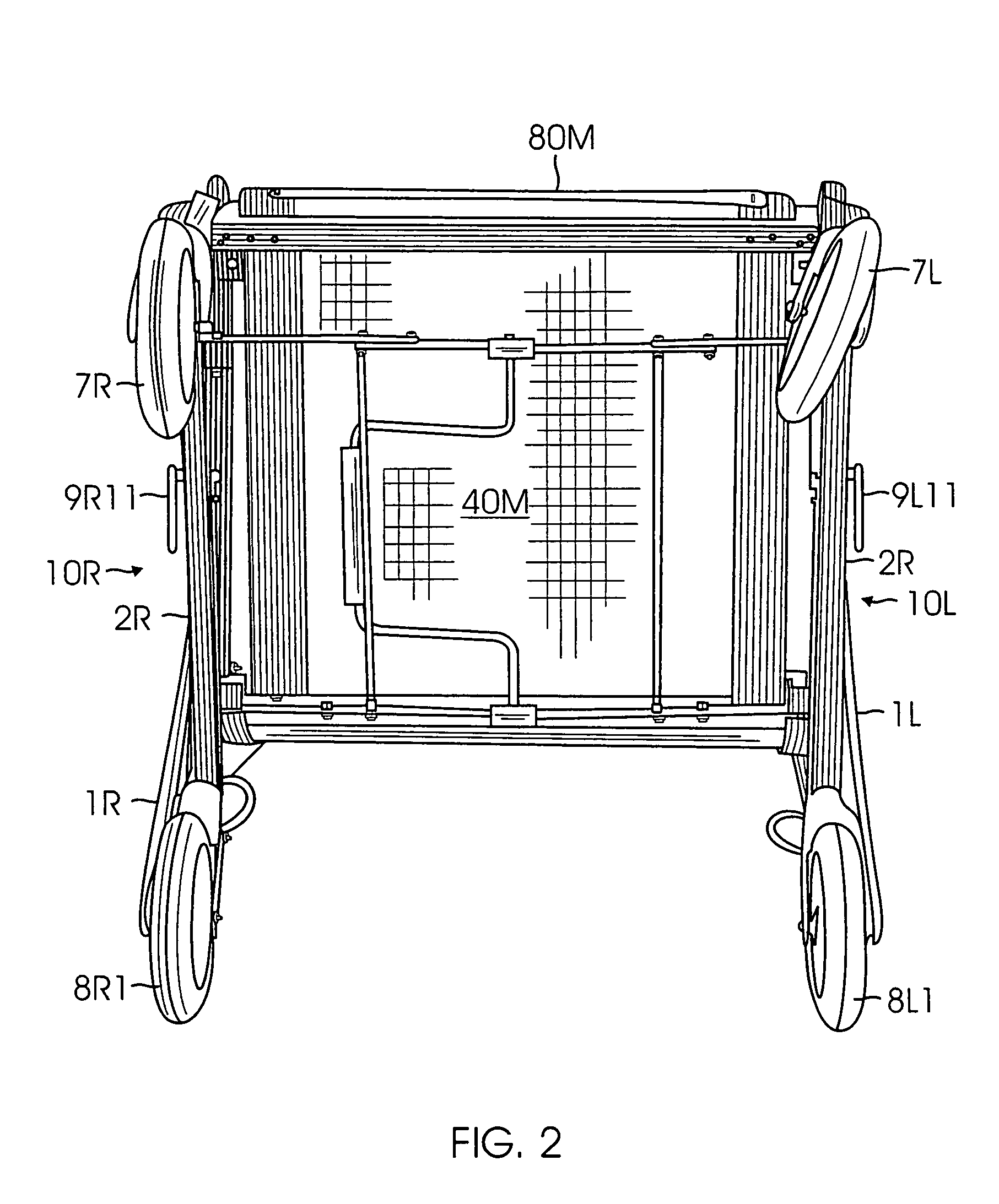Combination walker and wheelchair with improved ergonomic design
a combination walker and ergonomic design technology, applied in the field of physical assistance equipment, can solve the problems of not being padded, the backrest does not function as a device, and the bar does not really function as a leaning bar, so as to achieve the effect of facilitating pushing
- Summary
- Abstract
- Description
- Claims
- Application Information
AI Technical Summary
Benefits of technology
Problems solved by technology
Method used
Image
Examples
Embodiment Construction
[0097]Although specific embodiments of the present invention will now be described with reference to the drawings, it should be understood that such embodiments are by way of example only and merely illustrative of but a small number of the many possible specific embodiments which can represent applications of the principles of the present invention. Various changes and modifications obvious to one skilled in the art to which the present invention pertains are deemed to be within the spirit, scope and contemplation of the present invention as further defined in the appended claims.
[0098]Referring to FIGS. 1 through 9, there is illustrated present invention walking chair 1, which is user friendly and of ergonomic design which contains a foldable main structural frame, detachable back support and seat, leaning bar, and rotatable wide armrests made with compressive materials, and can be used for various applications including but not limited to a walker, a wheel chair, a transporting g...
PUM
 Login to View More
Login to View More Abstract
Description
Claims
Application Information
 Login to View More
Login to View More - R&D
- Intellectual Property
- Life Sciences
- Materials
- Tech Scout
- Unparalleled Data Quality
- Higher Quality Content
- 60% Fewer Hallucinations
Browse by: Latest US Patents, China's latest patents, Technical Efficacy Thesaurus, Application Domain, Technology Topic, Popular Technical Reports.
© 2025 PatSnap. All rights reserved.Legal|Privacy policy|Modern Slavery Act Transparency Statement|Sitemap|About US| Contact US: help@patsnap.com



